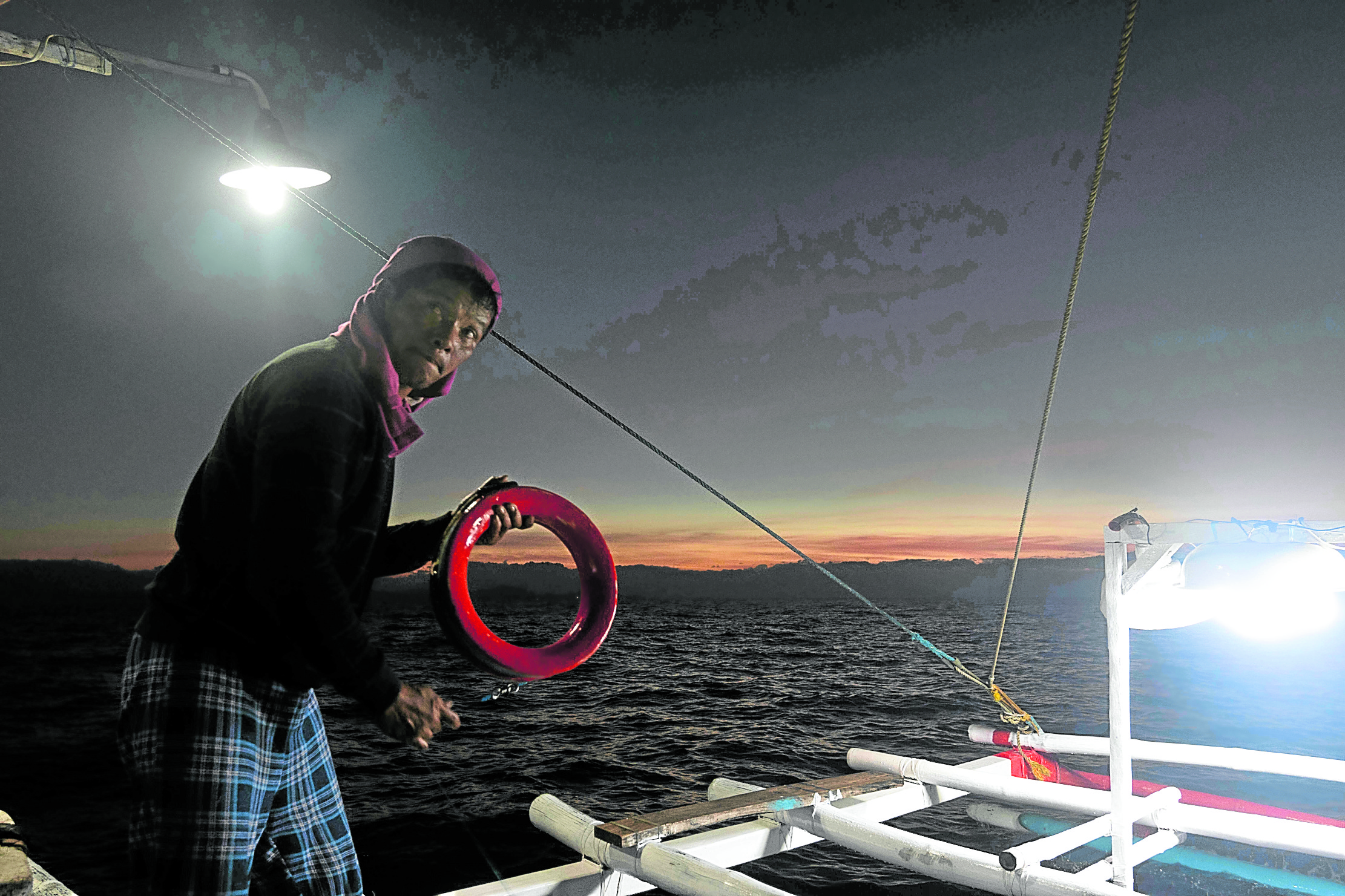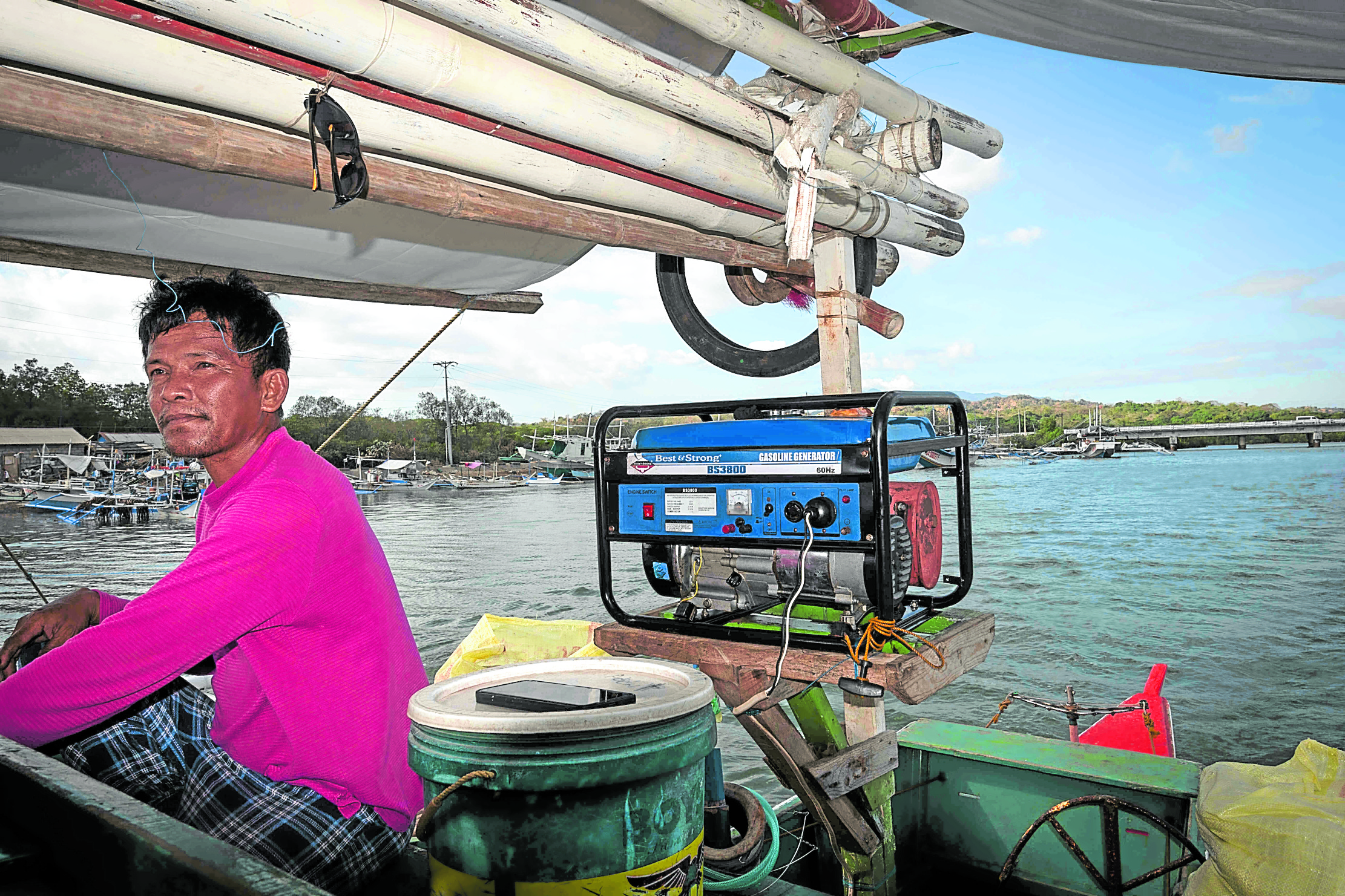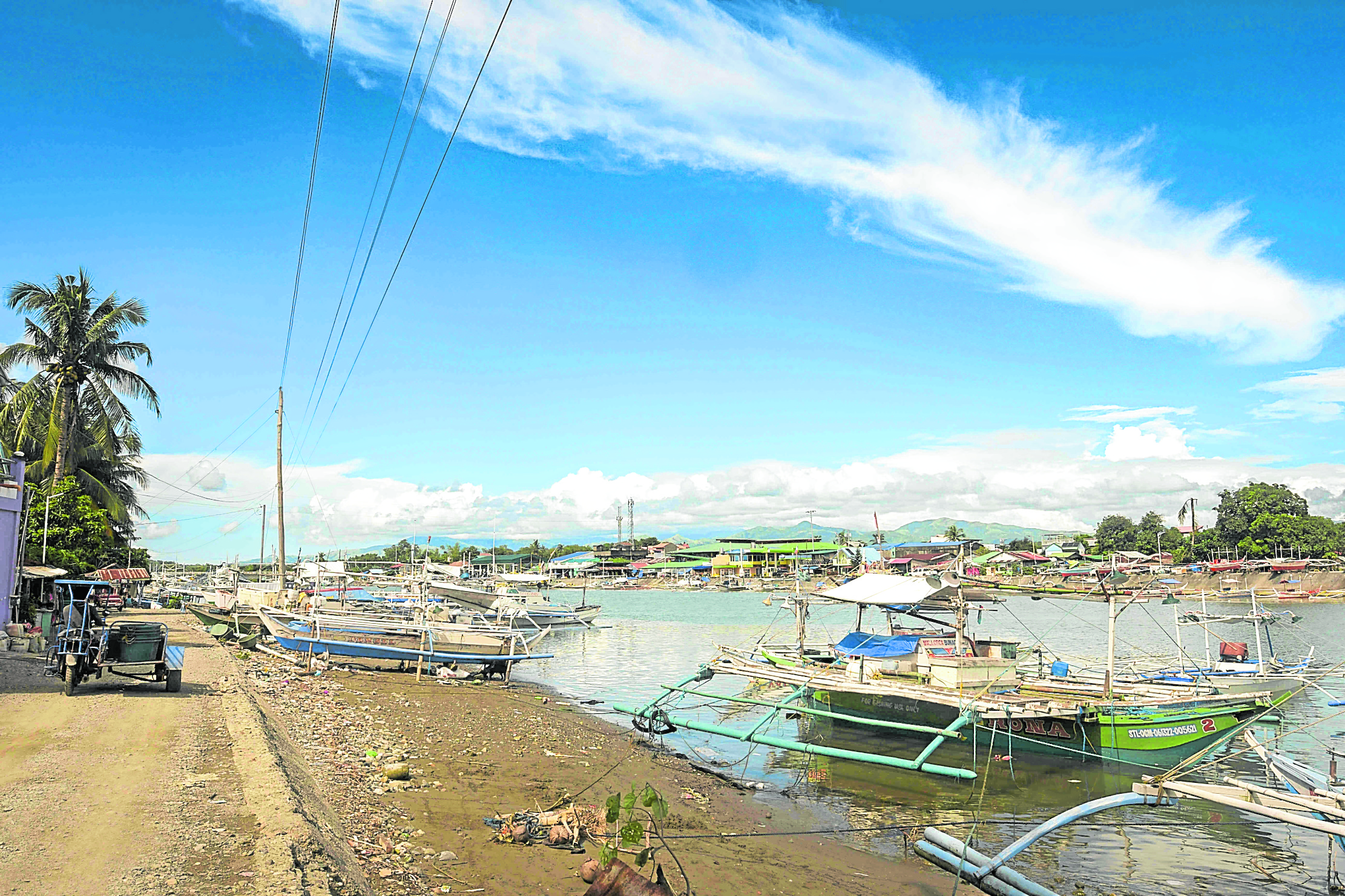A night at sea with Occidental Mindoro’s tuna fishers

NOCTURNAL QUEST The municipality has thousands of registered fishing boats, operated by locals who benefit from the vast number of fish species that thrive in the local waters.—CONTRIBUTED PHOTO FROM WWF
Mamburao, the capital of Occidental Mindoro, is home to coastal scenery and marine attractions.
Along with these, the municipality comes naturally blessed with marine resources that its people depend on for their livelihood. The municipality has thousands of registered and licensed fishing boats and many more fishers who operate these vessels and benefit from the vast number of species that thrive in the waters.
Bisecting the urban center of the municipality is the Mamburao River, a snaking body of water originating from the lower fringes of the Abra De Ilog municipality and opening all the way toward the Mindoro Strait. It is here at the mouth of the river that fishers dock their boats and drop their catch. One can see fishers and their companions lounging in the shade, discussing last trip’s haul or tomorrow’s expedition. Around the harbor, children play and chase each other, zigzagging through the wooden boats docked or floating along the river’s mouth.
The boats themselves come in all shapes and sizes. Some are skiffs, small boats able to hold only one or two fishers and their requisite ice boxes. Others are huge basnig, commercial bag net fishing vessels that can hold a crew two digits strong and are able to stay at sea for weeks at a time.
Municipal boats are surprisingly well-equipped. Aside from the main cargo hold where tuna and blocks of ice are stored, there is ample space to lie down. A propane gas tank and a small stainless-steel wok allow fishers to cook their food while out at sea. There are plates, utensils, mugs, and a kettle. Instant coffee is aplenty—manna to keep the sleepiness at bay as the men toil through the night.
Many other vessels come in different sizes, fashioned for different purposes and built to a standard shaped by history and tradition. Almost all have “katig,” wing-like bamboo outriggers jutting from the sides of hulls to help keep them stable, a ubiquitous feature of Philippine boats.
Main bait
March is the beginning of the hot, summer months. Mamburao in the afternoon is thick with salty humidity and sweltering heat. It is a few minutes past 4 p.m. as one boat sets out to sea.
The captain, 46-year-old William Balquin Jr., steers the boat out of the harbor, gripping a battered steering wheel and nimbly navigating the waves. The engine blares noisily as the boat picks up speed. In an hour, the boat is out in the open sea and the waves begin to lash the boat in earnest. Salty spray batters the passengers’ faces as the boat slices through the rough waves.
Balquin checks his GPS with his right hand as he drives with the left, navigating with the coolness of a seasoned veteran. Another hour and 20 kilometers from shore, the boat sputters to a stop. Ramil Ramos, a crew member, sets the “parachute,” a large tarp-like implement dropped in front of the boat to help align it with ocean currents. A whirl of activity commences as the last rays of the setting sun blanket everything in darkness.

FARTHER, LONGER In the past, the local fishermen didn’t have to venture far to haul a week’s worth of catch in just three days. Now they are forced to venture up to 40 kilometers from the coast and spend a week at sea to earn just enough from one expedition. —CONTRIBUTED PHOTOS FROM WWF
In a moment, lights are turned on, courtesy of a generator. The crew sets about catching squid to use as the main bait for yellowfin tuna, a major source of income for most anglers in Occidental Mindoro.
With a piece of wood, Ramos stirs the surface of the water, creating ripples that reflect the bright fluorescent lights so attractive to squid. He has already found time to change clothes, switching a thin shirt for a thicker one. “It gets cold out here at night, better to wear warm clothes,” he says.
Meanwhile, Balquin prepares the crew’s dinner. Amid the rocking of the boat that makes moving around difficult, he moves fluidly, with natural, instinctive ease as he cuts squid into portions, preparing garlic, green chilies, soy sauce and vinegar—ingredients for a squid adobo. This is the first part of the night—dinner before work begins in earnest.
“This is actually late for dinner, it should’ve been prepared already,” says Balquin. Fishers work against the clock since yellowfin tuna are most active during the night, somewhere between 1 a.m. and 5 a.m. Dinner is served and eaten quickly—spicy squid adobo over steaming white rice. A few moments after, Balquin washes the plates and utensils and starts going from katig to katig to resume setting up squid baits.
Catching yellowfin tuna is a time-consuming process, and out at sea, the night passes by quickly.
Most tuna fishers do not pack bait with them, preferring to catch them live. With squid parts hooked and ready, they tie long nylon lines around smooth, round rocks to be used as sinkers. To further attract the tuna, they lower the bait with a helping of ata or squid ink. With a flick of the wrist, they drop the rocks along with the bait and nylon tied around it; the length of the nylon varies to increase the chance that a tuna from different depths would bite.
Sacks of round rocks and bottles of ata are in ample supply, for tuna are rarely caught on the first try. After a time, fishers pull back the nylon and look for any bites or nibbles on the bait. They repeat this process until they have caught enough tuna, or until their supply of ata and rocks has been exhausted.
“This is our job. Our livelihood. There’s nothing we can do,” says Balquin, a father of five and a fisherman for 33 years. “I do hope that every time we go out to sea, we bring home tuna. If not, we make do with whatever small fish we catch. This is risky because we might go bankrupt.”
This is the unseen dance of disappointment and monotony that dominates the nights of so many fishers in Occidental Mindoro—the hours of waiting with no guarantee of reward.
“Sometimes it takes us five days. Sometimes just two, if you’re lucky,” Balquin adds.
More risks
Overfishing and changing ocean temperatures have drastically altered the fishing landscape in the Mindoro Strait. In the past, fishers didn’t have to venture far to haul in a week’s worth of catch in just three days. Now, they are forced to venture up to 40 km and spend a week at sea to earn enough from one fishing expedition.
With the rising cost of basic goods, plus mounting debts and the financial investment associated with every fishing trip, fishers in Occidental Mindoro are taking more risks than ever.
“When you go out to sea, you have to accept the fact that you already have one foot in the grave,” says Ramos. Compared to his colleagues, Ramos is a relative latecomer, already 26 years old when he first started fishing. The now 33-year-old provides for his wife and children through fishing. He relates stories of other fishers who have gone missing, their boats destroyed during fierce ocean storms.
“I say goodbye to my kids before we go because sometimes we’re out at sea for eight days,” he says. Staring at the pitch-black water, he adds, “I don’t want my kids to have this kind of life.”
With the fishing community’s reliance on a singular commodity in Occidental Mindoro, the competition will only intensify. Seasonal factors already make yellowfin tuna stock fickle, but commercial fishing is an added challenge.
To counter the economic strain on the fishers, WWF-Philippines has put up initiatives to help tuna fishers earn more from their catch by improving their product’s quality and postprocessing practices so they may lessen postharvest losses. Similar efforts have also been put into place to promote income diversification through the introduction of viable alternative livelihoods, and to empower women to manage these new opportunities.
“I tried other jobs, like driving tricycles for a living.” says Balquin. “But fishing is the best option. It’s great sometimes. When you manage to catch multiple big tuna, you’re immediately set. You go home then, no need to stay at sea for a while.”
It’s 2 a.m., still sometime before sunrise. Balquin prepares new baits and hooks and checks the half a dozen or so already set and waiting. Simple handline fishing is a sustainable method for catching fish. Although slower than other methods, its highly selective nature allows fishers to catch only target fish species.
As the winds die down and the crew takes turns resting, there’s still no tuna in sight. Two or three floating lights from a distance break the darkness, signifying that other tuna fishers are likewise at sea.
Ramos spends most of the night alternating between prow and stern, capturing smaller pelagic fish and the occasional squid or two, while Balquin inspects and reattaches the nylon lines, trying out different areas and different depths. They traverse the wet floorboards and the slippery katig without difficulty. “Everyone starts out afraid and nauseated, but you get used to it,” both say.

FARTHER, LONGER In the past, the local fishermen didn’t have to venture far to haul a week’s worth of catch in just three days. Now they are forced to venture up to 40 kilometers from the coast and spend a week at sea to earn just enough from one expedition. —CONTRIBUTED PHOTOS FROM WWF
Decade of partnership
“WWF has been with us for many years; we’ve formed a bond,” says Balquin. The partnership has blossomed through a decade of workshops, seminars, and initiatives between the team and the Mindoro Strait fishing community. “We always try to attend the training sessions provided by WWF,” he adds. The simple act of showing up helps amplify his community’s voice.
The WWF-Philippines’ Sustainable Tuna Partnership program is matched with the same commitment by the community it serves. The hope is that even when the project ends in December, the fishers’ social commitment will endure so they can continue to effectively advocate for their needs and interests on their own.
Fisherfolk empowerment has a long way to go. But more than a decade’s worth of work has led to substantial progress, much like the achievement of the prestigious Marine Stewardship Council (MSC) Certification in 2021. As long as fishers like Ramos and Balquin continue to champion the cause of sustainable fishing and actively participate in community empowerment, there remains a chance for a thriving and sustainable fishing community and industry in the country.
As night ends, there’s been no sign of tuna. Soon enough, the dark gives way to dawn. The nylons are retrieved, the ata and sinkers stored away. The “Parachute” is tucked aside. The fishers have to make do with their small catch of squid and big-eye scad.
Steam floats from fresh mugs of coffee as the sun’s first rays lick the horizon, announcing a new day. For the fishers, their day is over. The engine roars back to life. Captain Balquin takes position while the others sit and watch the horizon, their faces inscrutable. The two-hour trip to shore begins.
This is what it’s like, they say. This is why it takes them days and weeks at a time just to make ends meet. Back on shore, they will spend time with their families. They will sleep. Then they will be off to sea again.
WWF-Philippines continues its Sustainable Tuna initiatives in Occidental Mindoro through the Sustainable Tuna Partnership, funded by the German Federal Ministry for Economic Cooperation and Development and Project Buhay, a European Union SWITCH-Asia-funded project. WWF-Philippines has offices in both Mamburao and Sablayan.
This article was produced with the financial support of the German Federal Ministry for Economic Cooperation and Development and the European Union. Its contents are the sole responsibility of WWF-Philippines and do not necessarily reflect the views of the European Union.
